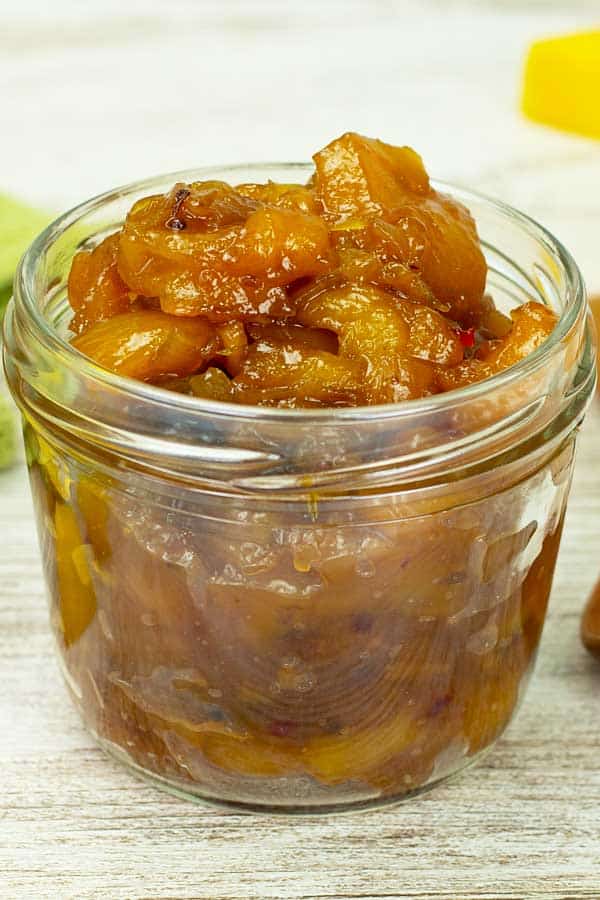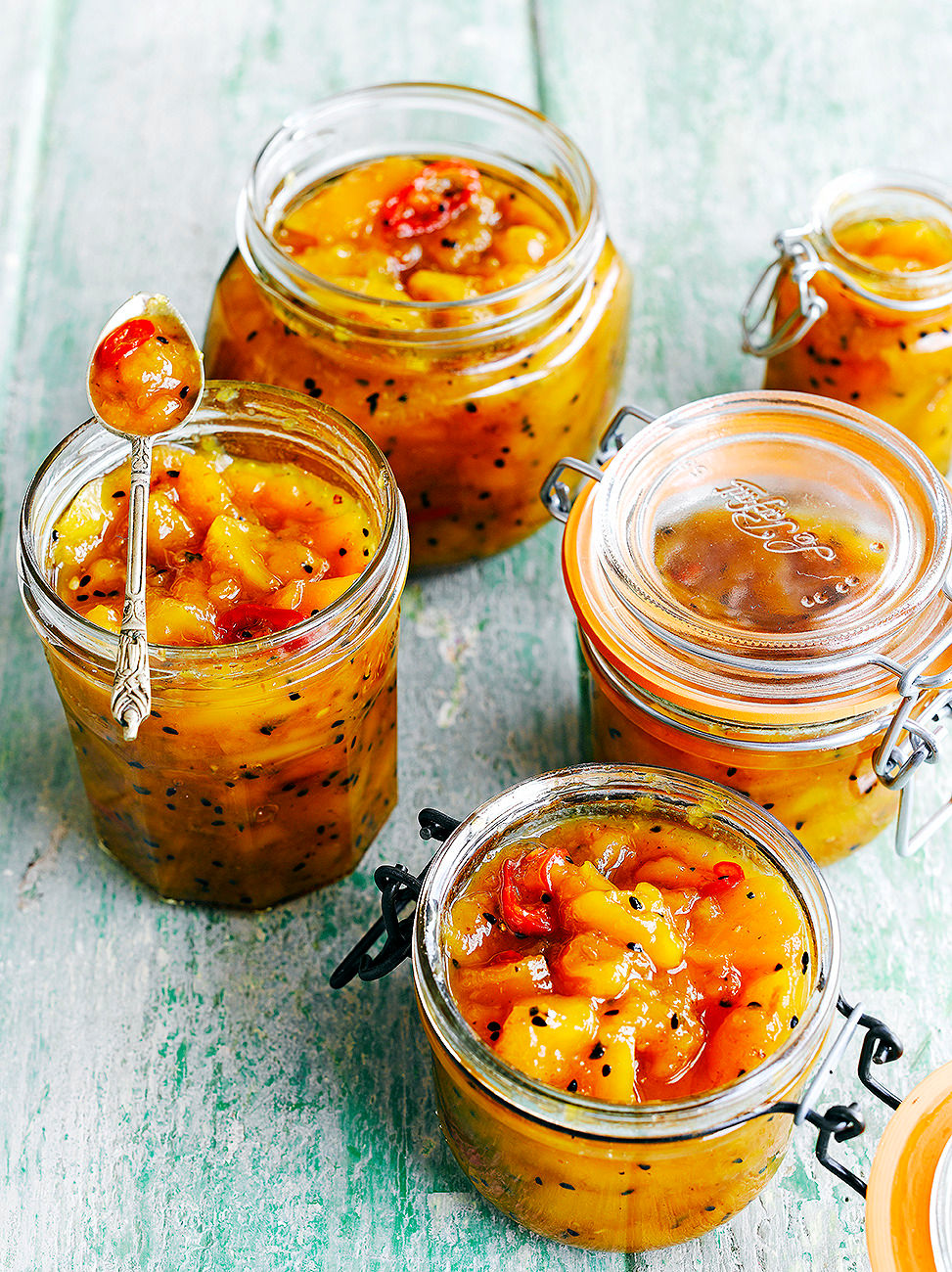

Stir in the bell pepper, onion, raisins, chili pepper flakes, garlic, and salt simmer 10 minutes. Combine vinegar and honey in a large pot. Remove bands from cooled jars and rinse the jars. (Place any jars that didn’t seal in the refrigerator and use them first. Once jars are thoroughly cooled, check the seal on all of the jars. As they cool, you’ll begin to hear a canner’s favorite sound: That lovely little tink! that indicates a successful seal. When time is up, use the jar lifter to transfer jars to a flat surface that’s padded with a kitchen towel. If necessary add more water to the canner. The water in the pot should cover the jars by 2″-3″. Use a jar lifter to transfer jars into the gently boiling water. 
Set the lids in place and screw the bands on firmly tight (but not too tight). Use a damp cloth to wipe the rim of each jar a little bit of food on the jar rim can prevent the lids from sealing properly. I have a canning funnel for this purpose, that makes it easier to transfer the chutney into the jars without a lot of mess.

Once the ingredients are chopped and cooked, you’ll ladle the chutney into pint jars. Making gifts? Grab these cute printable canning labels - complete with a gentle reminder to return the jar - for just 99 cents! Water bath canning mango chutney If you need to top off the water in the canner, you won’t cool down the water too much. Hot tip: Boil some extra water in a saucepan or electric kettle as you’re working.
#MANGO CHUTNEY RECIPE FULL#
Most canners will hold seven jars at a time, but you can process fewer than that if you don’t have a full load. You’ll want the water level to sit about an inch above the full jars during processing.Īdding the full jars to the water will cause the water level to rise how much depends on how many jars you’re processing at once. Just how much takes a little bit of guesswork.
For more on canning equipment, please go here.įill a large canner with water. Never reuse lids, with the exception of the Tattler or Harvest Right hard plastic lids that are intended for such a purpose. In other regions, the recommended pH is 4.6 or lower. Note: The Hawaii Master Food Preservers suggest a pH of 4.2 or lower in the tropics. I highly recommend investing in pH paper to test your products for acidity level when canning. Altering ingredients may change the recipe’s pH, posing a safety issue. Low acid items must be pressure canned for safety. Know the difference between water bath canning and pressure canning. The recipes on this site have been made following safe canning procedures by a certified Master Food Preserver. This is a good place to use fruit that’s not the best for eating!Ĭanning is an excellent way to preserve food for the pantry, but there are some important safety considerations to keep in mind. I’ve used foraged fruit, picked up from the side of the road and beautiful fruit harvested from a cultivated tree. Ingredientsįresh mangoes - The variety of mango you use is dependent upon what’s available to you. Store this mango chutney in the fridge for several weeks. 
It’s good served alongside soft cheese and crackers, too. Once cooked, serve it warm with roasted chicken or allow it to cool and add it to a sandwich. You’ll need to stir occasionally during the cooking time, but it doesn’t demand a lot of attention. It’s mostly a lot of chopping and a little simmering on the stove. The making of this mango chutney recipe is simple. Ready to DIY your pantry with healthier ingredients? Check out my ebook, The Handcrafted Pantry! Filled with delicious recipes for some of your favorite condiments, snacks, and toppings, it’s the guide you need to start skipping packaged products and embrace homemade.








 0 kommentar(er)
0 kommentar(er)
